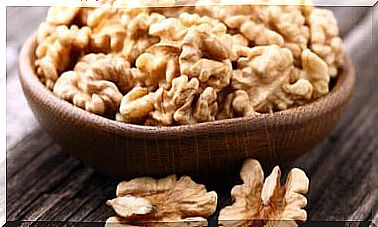What Are Germs And Where Are They Found?
Have you ever wondered what germs are? The word germ has different meanings depending on the context in which it is used. In biology it is defined as the reproductive part of a plant that germinates to grow, for example. For this reason, a germ is metaphorically known as the initiator of something, of a movement.
In this case, we see fit to clarify the definition and location of germs as biological pathogens in the following space. Continue reading if you want to know more about this exciting microscopic world.
What are germs?
This term is defined as any microorganism capable of producing a disease or damaging its host, be it of animal or plant origin. There are four main types of germs; We detail them below.
Bacteria
Bacteria are prokaryotic (ie, single-celled) organisms, which are a few microns in size and various shapes.
According to the Earth Microbiome Project , more than a trillion species of bacteria are estimated on the planet , so we are not exaggerating when saying that they are the essential foundation of every ecosystem. According to their morphology they can be divided into several types:
- Cocci, spherical in shape and depending on the number of individuals that make up the structure (diplococci, tetracocci and streptococci).
- Bacilli, rod-shaped.
- Helical forms: vibrios, spirilos and spirochetes.
Bacteria can be immobile or have motor skills, either through cilia or flagella that help them in the impulse. Depending on their detection method, based on the nature of the outer wall of their structure, they can be gram-negative or gram-positive. These microorganisms can be free-living or pathogens of living beings, including humans.

Virus
Viruses are even smaller than bacteria and simpler than bacteria. These germs consist of DNA or RNA chains (single or multiple of them) covered by a protein layer that gives them their three-dimensional shape.
There are around 5000 species of viruses described, and conceiving their reproduction is impossible without taking into account a host to invade. Viruses hijack the patient’s cells and their machinery, self-replicating within them to continue spreading the disease in the population.
Fungi, protozoa and others
In order to keep this space as concise and informative as possible, we will summarize the rest of the germs or pathogens below:
- Protozoa are unicellular microorganisms like bacteria, but they differ from them due to their greater size and morphological complexity. They live in humid environments, and can be parasites or free-living. A very clear example of the former is the protozoan that causes malaria.
- Fungi, unlike those named in the previous point, are a taxon of complex multicellular organisms, among which are molds, yeasts and mushroom producers. There are some fungi that can infect both animals and plants, forming a mycelium in the affected tissues and feeding on them.
- There are other germs that are more difficult to describe, such as viroids or prions, which are RNA molecules or misconfigured proteins with infective capacity.

Where are there more germs?
The most correct question would be what space on earth is free of them . Microorganisms dominate all environments, and they surround us at all times (and are even within us).
But, as in the strict sense of the word a germ is one that is pathogenic for other living beings, it will be consequent to limit its prevalence to certain public places:
- Pools and water parks. Here they all come together. Protozoa and fungi require moisture, and viruses high host density. Any humid and crowded place is a good breeding ground for colonies of germs.
- Money, grocery carts, surfaces in public toilets, and so on. Many viruses and bacteria remain on surfaces for a specified period of time, so the more people in contact with an instrument, the more likely it is to have a high germ load.
- The human body itself. Although it seems surprising, one or two kilos of our body can be weighed in bacteria, which are present mainly in our intestinal tract. Yes, these would not fall within the definition of germ as such, since they are not pathogenic for us. Even so, the human being presents high viral loads when passing illnesses, such as flu or colds.
As we have seen, the definition of germs falls short when it comes to encompassing the multiple microorganisms that cause pathologies in living beings. They all have something in common: they are microscopic beings that take advantage of the existence of others to survive, which causes diseases of various kinds in their hosts.








